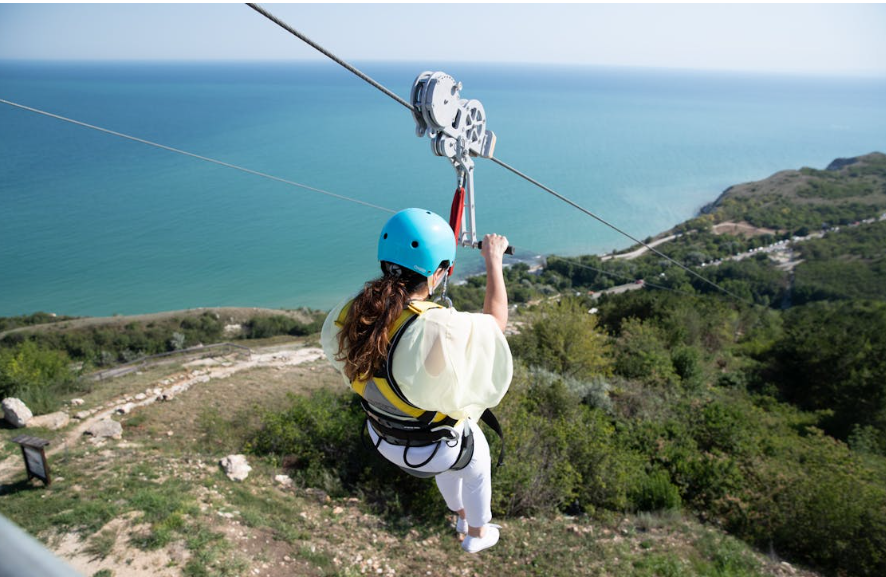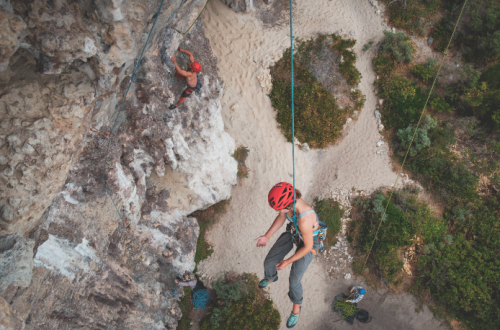
Ziplining Adventures: Flying Through the Rainforest Canopy
Introduction to Ziplining Adventures in Rainforests
Flying through a rainforest canopy on a zipline is an experience like no other, offering breathtaking views and an adrenaline rush. Ziplining allows travelers to experience nature from a unique perspective, while providing an exhilarating adventure high above the forest floor. More than just an outdoor activity, ziplining has evolved into a key attraction in eco-tourism.
The Origins and Popularity of Ziplining

Originally developed in the early 20th century, ziplining was used as a practical method for researchers and locals to cross dense forests quickly. Over time, it transformed into a popular sport, especially in tropical rainforests where the views from above are awe-inspiring.
The Thrill Factor: Why People Love Ziplining
The sense of flying, the rush of speed, and the incredible scenery make ziplining a thrilling experience. For many, it offers the closest sensation to soaring like a bird, creating an unmatched feeling of freedom and excitement.
Ziplining and Eco-Tourism
Today, ziplining is an integral part of eco-tourism, attracting visitors while promoting environmental awareness. Many ziplining companies emphasize conservation efforts, allowing visitors to enjoy the forest responsibly and appreciate its beauty without causing harm.
Preparing for a Ziplining Adventure
A successful ziplining experience requires some preparation to ensure safety and enjoyment.
Essential Gear and Safety Precautions
Participants must wear safety helmets, harnesses, and other necessary equipment. Following safety protocols and listening to the guide’s instructions can help prevent accidents, ensuring a safe and enjoyable adventure.
Physical Fitness and Health Considerations
While ziplining doesn’t demand extreme physical strength, a basic level of fitness enhances the experience. Flexibility and cardiovascular health make it easier to maneuver and enjoy the activity with confidence.
Selecting the Right Ziplining Tour
Choosing an experienced zipline operator with well-maintained equipment and trained guides is essential. Researching the course difficulty, length, and safety standards beforehand can ensure a safer and more enjoyable experience.
Experiencing the Rainforest Canopy

Gliding through the canopy not only offers thrilling adventure but also presents a unique chance to connect with nature.
Unique Flora and Fauna to Watch For
The rainforest is home to countless species, and while ziplining, you might catch glimpses of tree frogs, tropical birds, and perhaps even monkeys. Each zipline tour provides a unique perspective of the rainforest ecosystem.
Environmental Awareness and Conservation
Ziplining encourages environmental responsibility by exposing visitors to natural beauty without disturbing the ecosystem. Many companies include educational segments on conservation to help participants appreciate and respect the rainforest.
Best Rainforests for Ziplining Worldwide
Ziplining is available in some of the world’s most beautiful rainforests. Here are some top destinations for an unforgettable canopy tour.
Central American Rainforests
Central American countries like Costa Rica and Belize are famous for their rich biodiversity and exhilarating zipline tours through tropical rainforests.
Southeast Asian Rainforests
Thailand and Vietnam also boast lush rainforests, allowing visitors to zipline through vibrant landscapes and immerse in Southeast Asia’s natural beauty.
Amazon Rainforest
The Amazon offers a ziplining experience unlike any other, showcasing the world’s richest biodiversity. Zipping through this rainforest provides a front-row view to one of nature’s most remarkable ecosystems.
Environmental Impact of Ziplining Tours
Although ziplining is popular among eco-tourists, it’s important to consider its environmental impact.
Positive Aspects of Eco-Tourism
Eco-tourism, including ziplining, promotes conservation efforts by generating funds for environmental protection and spreading awareness about rainforest conservation.
Balancing Adventure with Conservation
To preserve the natural landscape, ziplining operators often implement measures to minimize environmental impact, such as using sustainable construction methods and limiting the number of participants on a course.
Conclusion: Embrace the Adventure Responsibly
Ziplining through the rainforest canopy is more than an adventure; it’s an opportunity to connect with nature on a profound level. As travelers, we hold a responsibility to appreciate and protect these forests, ensuring they remain untouched and magnificent for future generations.
FAQs After The Conclusion

- Is ziplining safe?
- Ziplining is very safe when participants follow the rules, wear proper safety gear, and zipline with certified guides.
- Who is ziplining suitable for?
- Most people can zipline, provided they are generally healthy and meet the weight and age requirements set by the tour operators.
- Does ziplining affect the rainforest ecosystem?
- Many ziplining companies take steps to reduce environmental impact, and the revenue generated from eco-tourism can contribute to conservation efforts.
- Should I book a ziplining tour in advance?
- Yes, especially during peak travel seasons, booking in advance ensures availability and often reduces waiting time.
- What should I wear for a ziplining adventure?
- Wear comfortable, activewear and closed-toe shoes. Most equipment, such as helmets and harnesses, is provided by the zipline operator.




